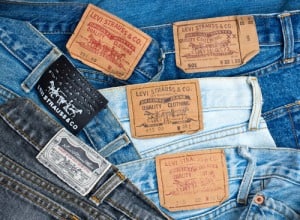
With RFID, Intel analytics, and sensors, Levi’s can quickly find a pair of jeans a customer left by the shirts.
Name of Organization: Levi Strauss & Co.
Industry: Retail
Location: San Francisco, CA USA
Business Opportunity or Challenge Encountered:
Levi Strauss & Co., one of the world’s leading apparel company and jeans makers, continuously strives to improve the in-store experience.
The company sought to improve the in-store experience by helping to ensure customers can easily find the products they want and avoid missing sales due to misplaced items. The company also sought to build a foundation for generating customer insights – to better understand customer preferences based on in-store behaviors.
Unfortunately, misplaced items can present challenges to that strong experience.
“Over the course of a day, customers occasionally place items in the wrong spot in the store—after deciding against a pair of jeans, a customer might inadvertently leave the jeans next to the shirts,” according to Noah Treshnell, senior vice president of the Americas for Levi’s. “We need ways to help our salespeople quickly find misplaced items, so they can put those items back where they belong and we can avoid losing sales.”
Locating misplaced items is particularly important for apparel retailers. Unlike other types of retail businesses, apparel retailers often keep only a few of each unique product type—or SKU—in the store. The business might have 50 pairs of each type of jeans in the store but only two or three of each size.
How This Business Opportunity or Challenge Was Met:
Levi’s turned to Intel to implement a solution that combines Internet of Things technology with advanced analytics to help determine when items are no longer in their correct places.
Levi’s and Intel piloted a solution based on Intel’s Trusted Analytics Platform (TAP), designed to help salespeople quickly find misplaced items in a store so they can ensure those items are on the shelves, in the right spots, and ready for customers. The solution incorporates radio-frequency identification (RFID) tags, in-store sensors, a gateway system, and cloud-based analytics built on TAP. The RFID tags were woven into clothing items.
The Intel team then installed antenna sensors in the ceiling of the store that enable continuous, real-time monitoring of the location of the RFID tags. A gateway system located in the store collects data from the sensors and then sends a smaller set of data to the cloud for detailed analysis. The gateway system conducts some basic data analysis to reduce the amount of data transmitted over the network to the cloud.
The TAP algorithms enables Levi’s team members to discover whether items are misplaced. The algorithms use data collected overnight (when products are stationary) to determine the correct locations for groups of items, such as jackets, belts, or a particular jeans style. During store hours, as sensors monitor the location of items, the algorithms determine whether an item is located in the correct location for its group. If a pair of jeans is on the proper shelf, or within arm’s reach of that shelf, no action is required from a salesperson. But if that pair of jeans is misplaced or left in a fitting room, the algorithm could generate an alert on a mobile app that an action should be taken.
Measurable/Quantifiable and “Soft” Benefits from This Initiative
The real-time monitoring system is intended to help Levi’s deliver a superior customer experience, as well as help Levi’s keep track of inventory. The insights gained from the solution can also help enhance the efficiency of store operations. For example, analytics insights can reduce the time it takes for salespeople to find misplaced items.
Using Internet of Things technologies in conjunction with TAP algorithms could also help managers and salespeople better control front and back-stock replenishment. Salespeople could receive alerts when it’s time to replenish jeans on a store shelf using stock from a back room. As a result, stock will be more readily available and visible to customers.
“By improving the accuracy of our inventory system, we can help our salespeople provide the right answer, right away. They can immediately find an item or offer an opportunity to order it,” said Treshnell.
(Source: Intel)





























